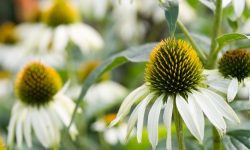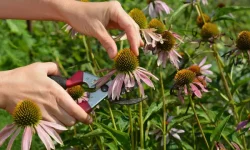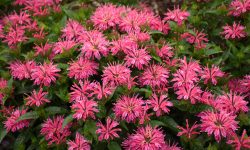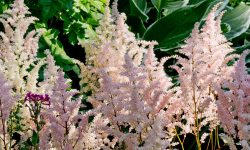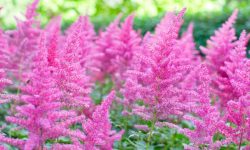Clematis vines are among the most enchanting climbers in any garden, boasting vibrant flowers that cascade like living jewels over trellises and fences. Their elegant blooms bring life and color to outdoor spaces, but achieving those spectacular displays year after year hinges on one crucial practice: proper pruning. Without it, your clematis may struggle to flower, become overgrown, or suffer from disease.
Understanding how and when to prune your clematis ensures you don’t accidentally remove the buds that will become next season’s flowers. Pruning may seem daunting, but with the right techniques, it becomes a simple ritual that renews your plant’s vitality and unlocks its full blooming potential. Let’s explore the essential tips to prune clematis confidently and keep your garden radiant through every growing season.
Understanding the Three Clematis Pruning Groups

To prune clematis successfully without sacrificing next season’s flowers, it’s essential to know which pruning group your plant belongs to. Clematis are generally classified into three groups based on when and where they bloom. This classification guides when and how to prune to maximize bloom potential and maintain healthy growth.
Group 1: Early Bloomers on Old Wood
Group 1 clematis bloom on last year’s growth, usually in late spring or early summer. Examples include Clematis montana and Clematis alpina. These varieties develop flower buds on stems grown the previous season, so pruning is minimal. You only prune right after flowering to tidy up the plant and remove any dead or weak stems. Cutting in late winter or early spring risks removing all the flower buds, which can result in a bloomless season.
These early bloomers are generally vigorous growers and can spread widely if not controlled. Light pruning after flowering encourages bushier growth without impacting the next season’s flowers. Their blooms often last several weeks, filling the garden with color early in the year.
Group 2: Repeat Bloomers on Old and New Wood
Group 2 clematis bloom on both old wood (last season’s stems) and new growth (current year’s stems). This group includes popular hybrids like Clematis ‘Nelly Moser’ and ‘The President.’ They typically flower twice a year — once in late spring or early summer, and again in late summer or early fall.
Pruning for Group 2 is a two-step process: a light prune in late winter or early spring to remove dead stems and shape the plant, cutting back weak growth to a healthy pair of buds; then a second prune after the first flush of flowers to encourage a new wave of blooms. This group benefits from careful balancing between preserving old buds and promoting new growth, allowing them to flower longer and more prolifically.
Group 3: Late Bloomers on New Wood
Group 3 clematis bloom exclusively on new growth from the current season. Well-known examples include Clematis ‘Jackmanii’ and ‘Sweet Autumn.’ These clematis produce flowers from late summer through fall, often providing the final splash of color before winter.
Because they bloom on fresh stems, Group 3 plants require a hard prune each year. Pruning is done in late winter or early spring by cutting all stems down to about 12-18 inches above the ground. This encourages strong new shoots and an abundance of flowers in the coming season. Since flower buds have not yet formed at pruning time, there’s no risk of cutting off next year’s blooms.
This group is ideal for gardeners who want large, showy flowers later in the season. They tend to be vigorous growers and can quickly fill trellises and fences when pruned correctly.
Why Pruning Clematis Matters for Healthy Growth and Flowers
Pruning clematis is not just a matter of aesthetics—it’s a vital gardening task that directly influences the health, shape, and future blooms of your plant. Clematis vines, if left unpruned, can become tangled and woody, resulting in fewer flowers and increased risk of disease. Pruning encourages vigorous new growth, stimulates bud development, and improves air circulation, which helps prevent issues like powdery mildew or stem rot.
Moreover, clematis plants bloom on either new growth, old wood, or a combination of both, depending on their group. Understanding how and when to prune ensures you don’t accidentally remove the very stems that will produce next season’s flowers. For gardeners who treasure these vibrant climbers, effective pruning is the secret to an abundance of large, colorful blossoms year after year.
Clematis vines are long-lived perennials that reward careful handling. Strategic cuts made at the right time of year promote controlled growth, reduce breakage from wind, and keep the plant growing in the desired direction, especially if trained on trellises, pergolas, or arbors. Done properly, pruning becomes a long-term investment in the plant’s beauty and structure.
Signs Your Clematis Needs Pruning
Recognizing when your clematis requires pruning is crucial for maintaining a healthy, vibrant plant. Over time, clematis vines can become dense and overcrowded, which restricts airflow and light penetration—conditions that foster fungal diseases such as powdery mildew and can weaken the plant. When you observe tangled or excessively thick growth, it’s a clear sign that pruning is necessary to open up the plant’s structure. Another important indicator is the presence of many old, woody, or dead stems. These unproductive parts not only drain the plant’s energy but also limit space for new growth. Additionally, if your clematis is producing fewer flowers than usual or appears leggy and untidy, these are strong cues to prune. Overgrown vines that spill beyond their support structures benefit from pruning to control their size and keep the plant manageable and aesthetically pleasing. The dormant season is the ideal time to inspect your clematis carefully and plan pruning, ensuring you remove problematic stems and encourage a fuller, healthier growth cycle for the next season.
Timing Clematis Pruning Based on Climate Zones
The best time to prune clematis depends largely on your local climate and hardiness zone. In warmer zones like 8 to 11, pruning can usually be done in late winter to early spring, as mild winters allow earlier growth without frost damage. Group 1 clematis should still be pruned after flowering to protect old wood, while Groups 2 and 3 can be pruned earlier to encourage new growth.
In cooler zones, such as 3 to 7, it’s safer to prune later in early spring, after the risk of frost has passed. Group 1 plants must wait until after flowering since their buds form on old wood, and pruning too soon could remove next season’s flowers. Groups 2 and 3 do best when pruned once buds start to swell.
In areas with unpredictable weather or frost risk, watching your plants closely and pruning when new growth appears is the safest strategy. Adjusting pruning times to your climate ensures healthier plants and more blooms each season.
Tools and Techniques for Effective Clematis Pruning
Choosing and properly using pruning tools is essential for the health of your clematis. Bypass pruners are preferred because they cut cleanly through stems, allowing wounds to heal quickly and minimizing the risk of infection. For thicker, older stems that bypass pruners cannot handle, loppers or pruning saws may be needed. Before starting, always sterilize your tools with rubbing alcohol or a disinfectant solution to prevent the transmission of diseases from one plant to another. When pruning, aim to make cuts at a slight angle just above a healthy bud or lateral shoot; this technique encourages new growth to sprout in the desired direction and prevents water from collecting on the cut surface, which can invite rot. Avoid crushing or tearing the stems during cutting, as this causes unnecessary damage and slows the healing process. Protective gloves are advisable to shield your hands from sap, thorns, or rough plant material. Using the right tools and cutting technique promotes faster recovery and reduces the likelihood of disease.
Step-by-Step Pruning Guide for Group 1, Group 2, and Group 3 Clematis
How to Prune Group 1 Clematis
The ideal time to prune Group 1 clematis is immediately after they finish flowering, typically in late spring or early summer. Pruning during late winter or early spring should be avoided because these plants produce flowers on old wood, and cutting too early risks removing next season’s flower buds. When pruning, use clean and sharp pruning shears to make precise cuts that protect the stems. Begin by removing any dead, diseased, or weak stems at their base, which helps improve air circulation and reduces the risk of disease. Next, thin out overcrowded areas by trimming some stems, allowing more light to reach the inner parts of the plant. Light shaping by trimming back long or unruly stems will encourage a neater appearance, but it is important to avoid cutting too aggressively to preserve the old wood where the flowers form. After pruning, adding mulch around the base will help conserve moisture, and applying a balanced fertilizer supports ongoing healthy growth.
How to Prune Group 2 Clematis
Pruning Group 2 clematis involves two main steps, starting with a light prune in late winter or early spring. At this time, begin by removing any dead or damaged stems completely down to the ground. For healthy stems, prune lightly by cutting back to just above the top two strong buds to encourage sturdy new shoots. Removing weak or thin stems further strengthens the plant’s overall framework. After the initial flowering period in late spring or early summer, a second pruning is beneficial. Once the spring blooms fade, cut back the flowering stems by about one-third to one-half. This practice stimulates a second flowering phase, often occurring in late summer or early fall, extending the plant’s display of blossoms. Using sterilized pruning tools and handling the stems gently helps avoid unnecessary damage. Following pruning, maintaining regular watering especially during dry spells and applying a low-nitrogen fertilizer supports flower development rather than excessive foliage growth.
How to Prune Group 3 Clematis
Group 3 clematis require hard pruning each year, performed in late winter or early spring just before new growth begins. All stems should be cut back to approximately 12 to 18 inches above the ground, leaving at least two or three strong buds on each stem to ensure healthy regrowth. Dead or weak wood should be removed completely to allow the plant to focus energy on vigorous new shoots. For thicker stems, use sharp loppers to make clean cuts, while smaller shoots can be trimmed with pruning shears. After pruning, applying mulch around the base protects the roots and helps retain soil moisture. Feeding the plant with a fertilizer rich in phosphorus encourages strong root development and supports abundant flowering later in the season.
Post-Pruning Care for Clematis to Maximize Blooming
After pruning, clematis plants benefit greatly from attentive care to recover quickly and prepare for abundant flowering. First, watering is crucial—deeply soak the soil around the base to encourage strong root development. Avoid shallow watering which can lead to weak roots. Maintaining consistent moisture, especially during dry spells, supports vigorous new shoot growth.
Applying a balanced fertilizer after pruning provides essential nutrients that stimulate healthy foliage and flower bud formation. Organic compost or a slow-release fertilizer enriched with phosphorus and potassium encourages root strength and vibrant blooms. Avoid excessive nitrogen as it promotes leafy growth at the expense of flowers.
Mulching around the plant base helps conserve moisture, regulate soil temperature, and suppress weeds that compete for nutrients. Use organic materials such as shredded bark or well-rotted compost to improve soil structure over time.
Monitoring your clematis for pests and diseases after pruning is also important, as fresh growth can attract aphids, slugs, or fungal infections. Early detection and appropriate treatment keep the plant healthy throughout the growing season.
Supporting your clematis with sturdy trellises or ties prevents damage to tender new shoots from wind or heavy blooms. Gentle training guides the vine to grow evenly and display flowers optimally.
Training and Supporting Clematis After Pruning
Once pruning is complete, proper training and support are fundamental to helping your clematis thrive. Clematis vines are natural climbers that require sturdy supports like trellises, arbors, or wires to grow vertically and display their flowers attractively. As new shoots emerge after pruning, gently tie them to the support structure using soft plant ties, strips of old pantyhose, or cloth strips. This prevents damage to the delicate new stems while guiding their growth. Regularly check and adjust the ties to accommodate the vine’s increasing thickness, ensuring they are not too tight, which could girdle and damage the stems. Training your clematis evenly across the support maximizes sunlight exposure and air circulation—two critical factors that reduce fungal diseases and improve flowering. Additionally, a well-trained vine tends to grow stronger and is less prone to wind damage. Supporting and training your clematis effectively enhances its overall appearance and encourages a lush, balanced bloom display.
Dealing with Common Pruning Challenges
Pruning clematis, though beneficial, can sometimes present challenges that affect plant performance. One common issue is reduced or delayed flowering following pruning. This often results from incorrect timing, especially pruning too early or cutting back hard on clematis varieties that bloom on old wood, thereby removing the flower buds for the next season. Understanding your clematis group is vital to avoid this mistake. Another problem is weak or slow regrowth, which might stem from poor soil conditions, insufficient watering, or inadequate fertilization. Environmental stressors such as extreme heat or drought can also hinder recovery. Furthermore, dense foliage created by improper pruning can create humid microclimates within the plant, encouraging fungal diseases like powdery mildew or leaf spot. To tackle these issues, improve soil fertility by adding organic matter, maintain consistent watering practices, and ensure good airflow by thinning overcrowded areas. Early detection and treatment of pests like aphids and diseases are equally important to maintain plant vigor. Adjusting your pruning techniques and cultural care accordingly will help overcome these common obstacles and support a thriving clematis.
Benefits of Regular Clematis Pruning
Regular pruning offers extensive benefits that go beyond aesthetics. It stimulates the production of new shoots, which are typically more vigorous and capable of producing abundant, high-quality flowers. By removing old, dead, or damaged wood, pruning conserves the plant’s energy and redirects it towards healthy growth and bloom development. Improved airflow and increased light penetration due to pruning reduce the risk of diseases, creating a healthier growing environment for the vine. Additionally, pruning helps control the size and shape of your clematis, preventing the plant from becoming too heavy or sprawling beyond its support, which can lead to breakage or damage. For gardeners, consistent pruning is a rewarding practice that prolongs the lifespan of clematis plants and enhances their flowering potential year after year. A well-maintained clematis becomes a stunning focal point in any garden, showcasing spectacular blooms that captivate all season long.
Essential Care Tips for Healthy Clematis After Pruning
Pruning is only the first step in maintaining a flourishing clematis; the way you care for the plant afterward plays a crucial role in its recovery and bloom performance. First, focus on watering: clematis need consistently moist soil, especially during active growth phases, but they are very sensitive to waterlogged roots. Deep watering once or twice a week is ideal, allowing the water to penetrate to the root zone. To prevent moisture loss and temperature fluctuations, apply a generous layer of organic mulch—such as shredded bark, straw, or compost—around the base of the plant, while keeping the mulch a few inches away from the stems to avoid rot.
Fertilization should be carefully timed and balanced. Use a slow-release fertilizer rich in phosphorus to encourage root and flower development or enrich the soil annually with well-rotted compost. Avoid excessive nitrogen fertilizers, as these promote leafy growth at the expense of blooms. Apply fertilizer in early spring to support initial growth and again after pruning to fuel new shoot development.
Sunlight exposure is another critical factor. Most clematis varieties prefer at least six hours of direct sunlight daily, with their roots shaded or kept cool. Planting companion plants or applying mulch helps shade the roots, preventing stress from overheating. Lastly, regularly inspect your clematis for common pests like aphids, which suck plant sap and may transmit diseases, or slugs that damage young shoots. Early detection and treatment, whether through organic methods or targeted insecticides, prevent minor infestations from escalating. Keeping good air circulation around the plant by proper pruning and spacing also helps reduce fungal diseases such as powdery mildew or leaf spot, which thrive in damp, crowded environments.
Troubleshooting Common Issues After Pruning Clematis
Even with diligent care, clematis plants sometimes face challenges that can hinder their recovery and flowering after pruning. One frequent problem is slow or stunted growth, which often results from pruning at an inappropriate time or cutting off emerging flower buds, especially in varieties that bloom on old wood. Understanding your clematis type and pruning schedule is vital to avoid this issue.
Leaf yellowing or wilting can be a sign of inconsistent watering—both drought stress and overwatering disrupt root function. Overwatering may lead to root rot, while underwatering deprives the plant of essential moisture. Adjust watering practices accordingly, ensuring the soil remains moist but well-drained.
Pests such as aphids, spider mites, and scale insects can weaken clematis by feeding on sap and sometimes transmitting viruses. They often congregate on new growth and flower buds, so regular monitoring is essential. If infestations appear, consider natural predators like ladybugs, or apply insecticidal soap or neem oil.
Fungal diseases can also cause problems, particularly powdery mildew, which shows as a white, powdery coating on leaves and stems. This typically develops in humid or poorly ventilated conditions. To combat fungal issues, improve airflow through strategic pruning and avoid overhead watering. Fungicides may be necessary for severe cases, but prevention through good cultural practices is always best.
By identifying symptoms early and adapting care routines accordingly, you can help your clematis recover from pruning stress and enjoy healthy growth and abundant blooms season after season.
Frequently Asked Questions About Pruning Clematis
When is the best time to prune clematis?
The best pruning time depends on the clematis group. Early-flowering types that bloom on old wood are pruned right after flowering, usually late spring or early summer. Late-flowering clematis that bloom on new growth are typically pruned in late winter or early spring before new shoots emerge. Knowing your clematis group is essential for timing pruning correctly to avoid cutting off flower buds.
How much should I prune my clematis?
Pruning intensity varies by clematis type. Some need only light pruning to remove dead or weak stems, while others require cutting back hard to encourage vigorous new growth. Generally, pruning removes about one-third to two-thirds of the plant, focusing on old, damaged, or overcrowded stems. Always prune just above a healthy bud or side shoot for optimal regrowth.
Can I prune clematis at any time of the year?
Pruning clematis at the wrong time can reduce flowering or damage the plant. Avoid heavy pruning during active blooming or late summer. Dormant season pruning (late winter or early spring) is usually safe for most types, but always check your specific clematis variety to determine the ideal pruning window.
What tools do I need for clematis pruning?
Sharp bypass pruners are the best choice for clean cuts. For thick or woody stems, loppers or pruning saws might be necessary. Sterilize your tools before use to prevent disease transmission. Wearing gloves protects your hands from sap and rough stems.
What should I do if I accidentally prune too much?
If you prune too aggressively, your clematis may produce fewer flowers that season but should recover the next year. Ensure the plant receives proper care with adequate watering, fertilizing, and support. Avoid stressing the plant further by keeping pests and diseases in check and providing good growing conditions.
Conclusion: Prune Clematis with Confidence for Stunning Blooms Year After Year
Mastering the art of pruning clematis is one of the most rewarding gardening skills you can develop. By understanding your plant’s specific pruning group, using the right tools, and applying proper techniques, you protect those precious flower buds and encourage vigorous growth. Regular pruning not only keeps your clematis healthy and disease-free but also enhances its natural beauty, ensuring a dazzling display of blooms every season.
Remember, pruning is just the beginning. Pair it with attentive aftercare—consistent watering, balanced feeding, and vigilant pest management—to unlock your clematis’s full potential. With patience and practice, your clematis will thrive, transforming your garden into a vibrant haven filled with graceful, colorful flowers. Embrace pruning as a vital part of your clematis’s life cycle, and you’ll enjoy breathtaking blossoms that reward your care year after year.

